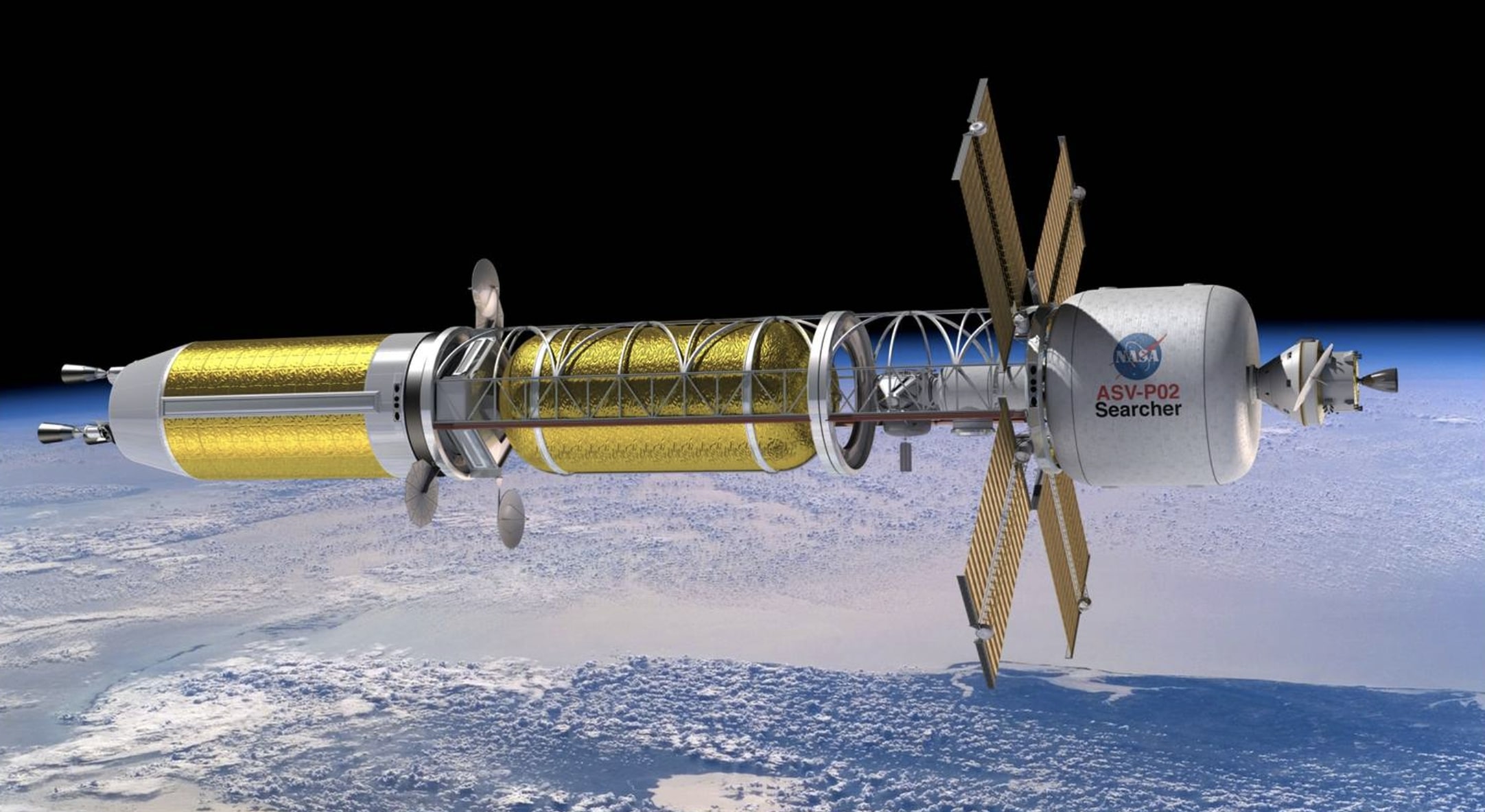Students at URI are teaming up with NASA to develop engines that will cut space travel to Mars in half. PHOTO CREDIT: NASA
When University of Rhode Island mechanical and industrial engineering professor Bahram Nassersharif first met Michael Houts, he knew that he wanted to bring Houts to his classroom.
Houts, nuclear research manager at NASA’s Marshall Space Flight Center in Alabama, gave a presentation to the American Nuclear Society, in Boston in April 2021. Shortly after attending this seminar with one of his graduate students, Nassersharif contacted Houts about getting his students involved in this research about nuclear propulsion.
“He gave me a lot of information about the project,” Nassersharif said. “From there, I identified different areas in which my students could contribute to the staff.”
This idea sparked a frenzy of research and experience for 13 of Nassersharif’s undergraduate engineering students, who are currently working alongside NASA and other universities across the country to create an engine that will cut the amount of time to get humans to Mars in half.
The engine, which is currently being researched by students at URI, Pennsylvania State University, the University of Michigan and more, will use nuclear thermal propulsion rather than the chemical propulsion technology that has been used in the past. Nassersharif said that nuclear propulsion is a safer and more efficient way to get humans into space because it requires much less equipment.
“Nuclear engines are very compact because there’s a high amount of energy that is produced per unit of mass compared to chemical reactions,” Nassersharif said. “The nuclear reaction has about 50 million times more energy per reaction compared to chemical, so you get a lot more heat energy that you need to create a propellant propulsion.”
Chemical reactions require oxygen, according to him, which is not a natural proponent of space. Because of this, the astronauts have to carry large tanks of hydrogen and oxygen on the spaceship with them, which adds extra mass, causing the trip to take much longer than without the extra mass.
Nuclear engines, however, do not require any oxygen. Nassersharif said that the reactor on a nuclear engine is about five feet long and about three or four feet in diameter, which is much less mass than the oxygen and hydrogen tanks, leading to a faster travel time to Mars.
URI is working on a small portion of the larger project. Inside of the proposed engine are small fuel cylinders that need to spin to create centrifugal force. Nassersharif’s students are working on making these cylinders spin.
Centrifugal force is the same kind of force that keeps people suctioned to the walls on spinning rides at fairs and carnivals, according to Zachary Hermanson, a senior mechanical engineering major working on this project.
Nassersharif split the class into three different teams, each of them focusing on a different part of the research. Team one is working on researching different ways to get the tubes to start spinning. Team two is working on the tube’s operation during the flight, making sure they all spin synchronously. Team three is designing a three-dimensional model of the concepts so that students have a tangible idea of if their proposal will work.
Collin Treacy, a senior chemical engineering and applied mathematics double major working on the project, said that team two is working to make the spinning of the cylinders automatic rather than manual, similar to the engines of a car.
“This kind of technology applies everywhere,” Treacy said. “It is in your air conditioning, it is in self-driving cars. That is your control system, and that’s what we’re trying to create for this engine.”
Hermanson said that when brainstorming a project as large as this, there is a lot of trial and error. According to him, they started with 120 design ideas that were narrowed down to three. The team then chose one final idea that they are now pursuing.
Rachael Bjorn, a senior mechanical engineering and German double major, said that working with NASA on this project has been an amazing opportunity for her due to the hands-on engineering experience and real-life research that it entails.
“In the engineering program, it’s a lot of theoretical stuff, but in our capstone, we get to put all of this knowledge into practice,” she said.
The forced switch to online school during the COVID-19 pandemic, according to her, may have caused her to miss out on some hands-on experience before this point in her education. This makes this capstone even more special for Bjorn, as it is one of the first times that she gets to build things.
Bjorn, Hermanson and Treacy all said that working with Houts as their advisor from NASA and the other students from partnering universities was intimidating at first, but they have since formed a relationship with him and the other students.
“We have bi-weekly meetings with the students at the other universities, and for the first few meetings, I didn’t say anything,” Hermanson said. “I was too scared. You kind of look at yourself and you’re like, ‘Do I have the credibility for this?’”
Treacy said that balancing this kind of intensive research combined with being a full-time student has been challenging.
“I have all of my time laid out on my Google Calendar and I know what I do every single hour of the day,” Treacy said. “So, even with this amount of organization, there are still times where I feel like there isn’t enough time in a day. But, I guess that’s just how college goes regardless of your course of study.”
Overall, Bjorn, Hermanson and Treacy said that this experience has been beneficial to learn how to generate ideas, work collaboratively and has provided them with experiences that will catapult them into their future endeavors.

